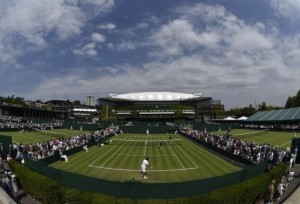Photography is, in some ways, going out of style. With video cameras in our pockets, we no longer need to take countless photos in order to store our memories. On the other hand, it has never been more in vogue. Instagram is still primarily a photo sharing platform, and selfie culture has led to countless apps being developed, as well as tools to make taking the perfect face pic as easy as possible.
Online photo storage services, as you can see on Best Online Reviews, make it easy to keep track of these photos, and millions of people still love a still image.
Sports photography, however, might be deemed by some to be unnecessary. After all, sports is not art. When you are portraying a sports “scene”, you’re trying to show what is happening in a game and not the idealised version. Videos can show you the perfect serve in a way that photos simply cannot. Sports photography is turning into a hobby, and most people wonder if it’s even necessary. As newspapers are slowly becoming redundant, we won’t even need backpage pictures anymore.
Despite the fact that every sport has masses of matches going on throughout the world, most are being recorded and shown on one medium or another. No one catches up through still photography anymore.
Universality vs. Specificity
However, for the same reason sports photography seems unnecessary, it is incredibly important. There is so much sport happening at every moment throughout the world. And it is being recorded. But people do not generally watch old games. The more records of old tennis matches being kept, the less likely people are to go through the archives.
It’s a pity, but inevitable. Even if you’re simply following one player, the wealth of content is overwhelming. Roger Federer, for example, has so many wins that you’re unlikely to watch any of them. A specific match seems unimportant in the grand scheme of things.
But sports photography is not about specificity. It does not give you the context of a game. Rather, it captures a moment in time, and makes that universal – available now and for posterity. People can look at a sports photograph in the future and “get” what the photographer was trying to portray. A player with a certain look in his or her eyes. The hunger for victory. The despair at losing. The hope of recovery.
All of this cannot be portrayed through recordings. There is just too much going on for that to be the case.
Sports photography is the opposite of selfie culture. The players aren’t posing for the perfect shot of their faces. Their expressions may well betray them. And we’re all the better for it.
While photography may seem like a defunct way of keeping track of history, it is actually vital. Just as all art portrays a sense of an era, so too does photography. In sports, it does far more than videos could, keeping a record of the universality of human feeling in competitive action.

